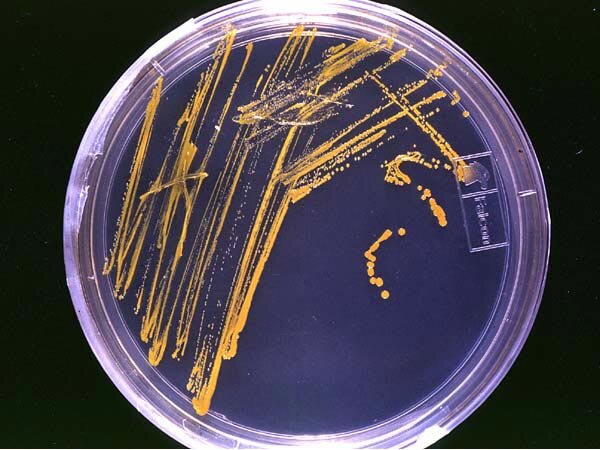Dragonella

Out of all the many dangers inherent in dragon-slaying, nobody ever stops to worry about salmonella.
Salmonella is a group of bacterial species, several of which are dangerous to humans. The bacteria cause a disease state known as salmonellosis, but for simplicity's sake, most people just call the infection salmonella too. Salmonella is considered a "zoonotic" disease because humans most often contract it from contact with various animals, usually by eating them. Most famously, people contract salmonellosis by eating undercooked food, but thanks to the miracle of poor hand washing, people are perfectly capable of getting bacteria into their mouths while eating clean, well-cooked food. A salmonellosis infection typically causes a lot of gastrointestinal complaints, usually diarrhea, and for healthy adults the infection is generally of no great importance; people feel sort of miserable for about a week, and then they get better without the need for any special medical treatments. It can be more of a problem in anyone with a weakened immune system, though, and for a variety of reasons, children are particularly vulnerable to the illness. Kids become infected more easily in adults, and are much more likely to develop life-threatening manifestations, ranging from dehydration (a direct result of fluid loss from the gut) to spread of the infection to the nervous system. A healthy young knight in the prime of his life would have little to no chance of actually being killed by salmonellosis, but nothing detracts from the feeling of triumph that comes from winning a battle like spending the next week unable to leave the outhouse.
All of which is relevant because we have reason to imagine that dragons carry Salmonella bacteria. We can think of it as one last bit of revenge on their slayers.
Certain animal species are more likely to carry Salmonella than others, and different species of Salmonella are associated with different carrier animals. Despite the disease's name, fish aren't a huge carrier of Salmonella (the disease is actually named after Dr. Daniel Salmon). Salmonella is, however, frequently carried by reptiles. In the Western world, where most people don't live in close proximity to wild reptiles, salmonellosis species are common traced back to pet turtles and the like. Wild animals have been shown to carry Salmonella species infectious to humans, however. A study recently came out of Japan which demonstrated that several common local snake species tested positive for Salmonella species known to be infectious to humans. The authors postulate that these wild snakes could become a source of salmonellosis infection, although public health data suggests that this isn't the case at the moment. To be honest, given that Japan is moving towards having less and less rural areas and not more, I was a bit puzzled by the authors' assertion that this sort of thing might become more of a problem and not less, but I assume they know their country better than I do.
How is this relevant in a game setting? If turtles and snakes carry a potentially dangerous pathogen, it isn't too great a leap of logic to imagine that other reptiles might as well. Granted, in real life, the fact that one animal species carries dangerous strains of Salmonella is absolutely no guarantee that another, very similar species will too, but poetic license means we can bend plausibility a bit to suit our needs. If dragons carry Salmonella, then any unwary human who comes into physical contact with a one, whether its swinging a broadsword or handling the same chess pieces, has a small but theoretically meaningful risk of picking up the bacteria. Then, since its hard to imagine that most adventures are sticklers for washing their hands before they eat, there's a real chance of getting sick. For that matter, it doesn't actually have to be physical contact. Salmonella bacteria can be shed by an organism and lie in dirt or dust. Unlike some bacteria, which have to remain in an optimum environment at all times to survive, Salmonella species can survive for weeks outside of a host's body, and that cloud of dust that the characters kick up as they walk through the tunnel system could contain all sorts of lovely microorganisms for them to bring home with them.
It's well worth remembering that not every disease has to be deadly to be interesting. A few days of a rumbling stomachs can have more impact on a story than a deadly plague if used properly.
More than four years ago, Dr. Eris Lis, M.D., began writing a series of brilliant and informative posts on RPGs through the eyes of a medical professional, and this is the one that appeared here on September 1, 2013. Lis is a physician, gamer, and author of the Skirmisher Publishing LLC OGL sourcebook Insults & Injuries, which is also available for the Pathfinder RPG system.






